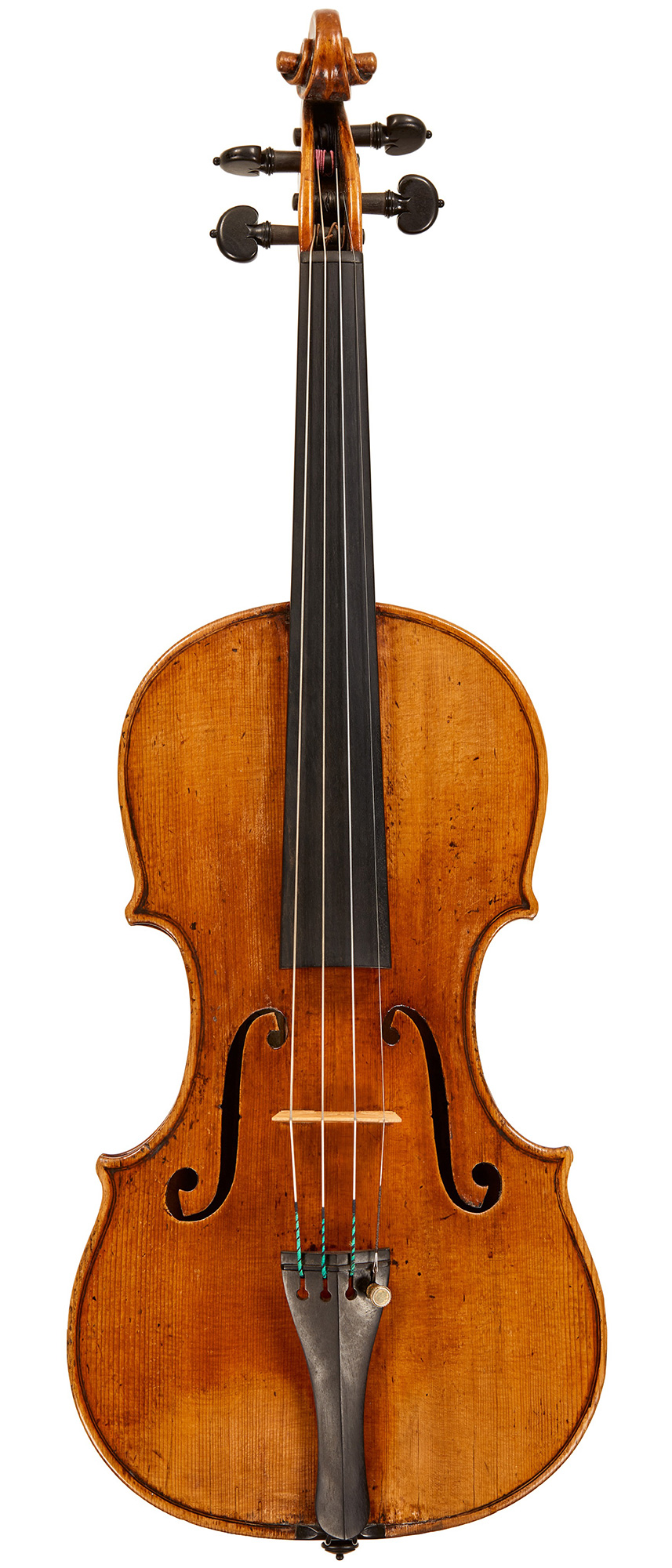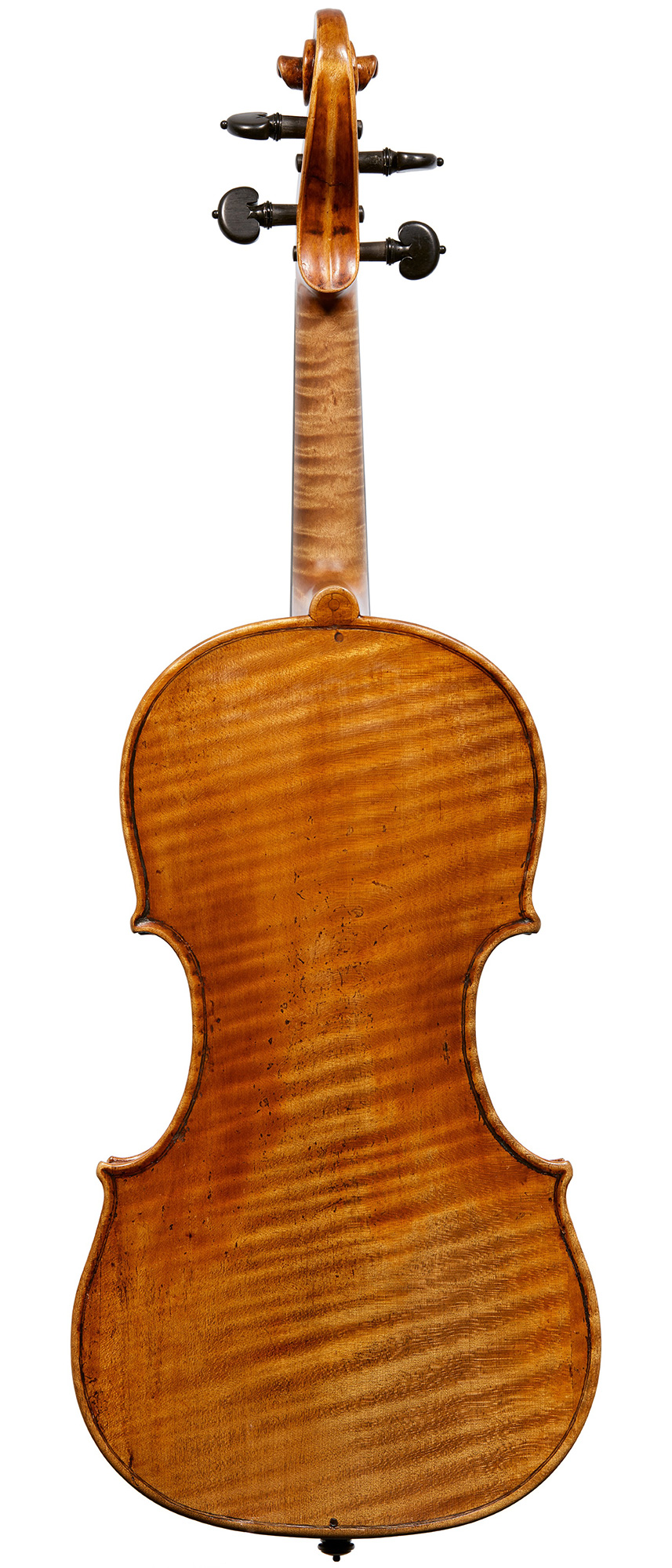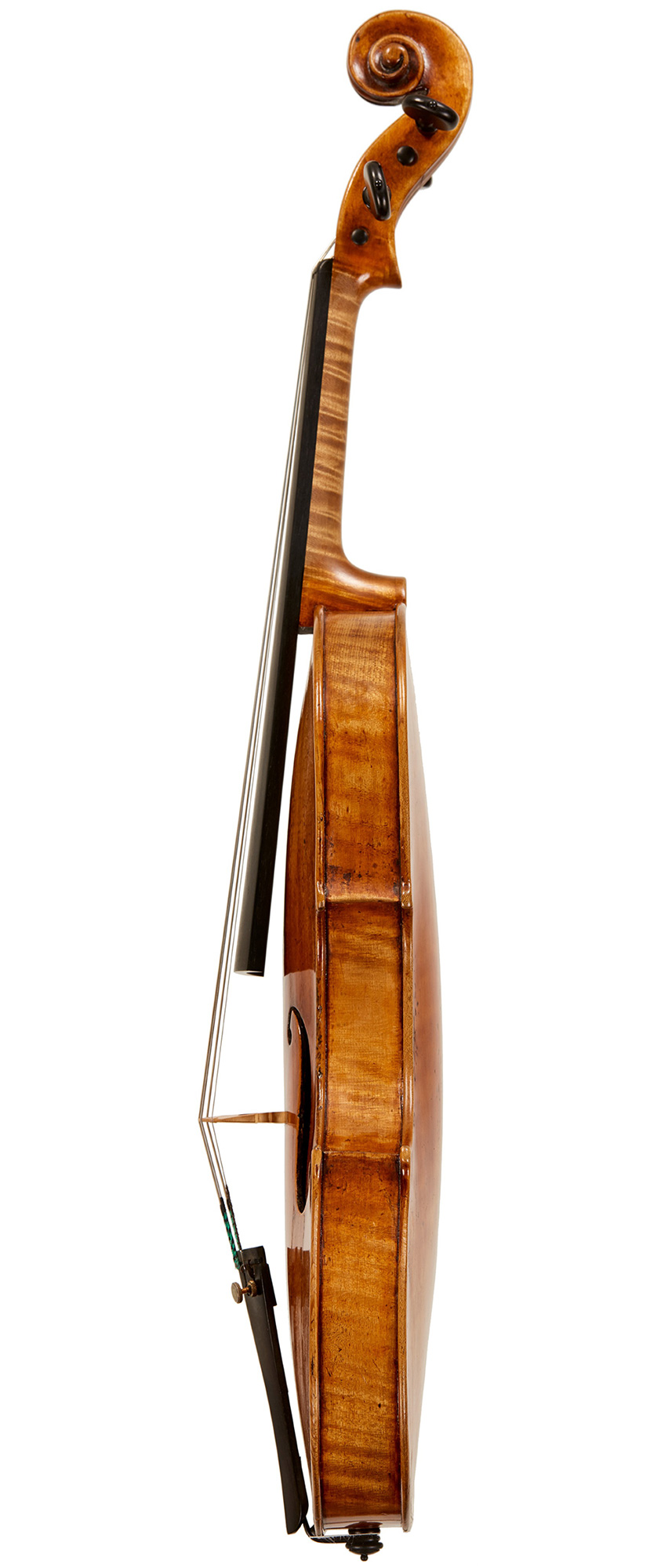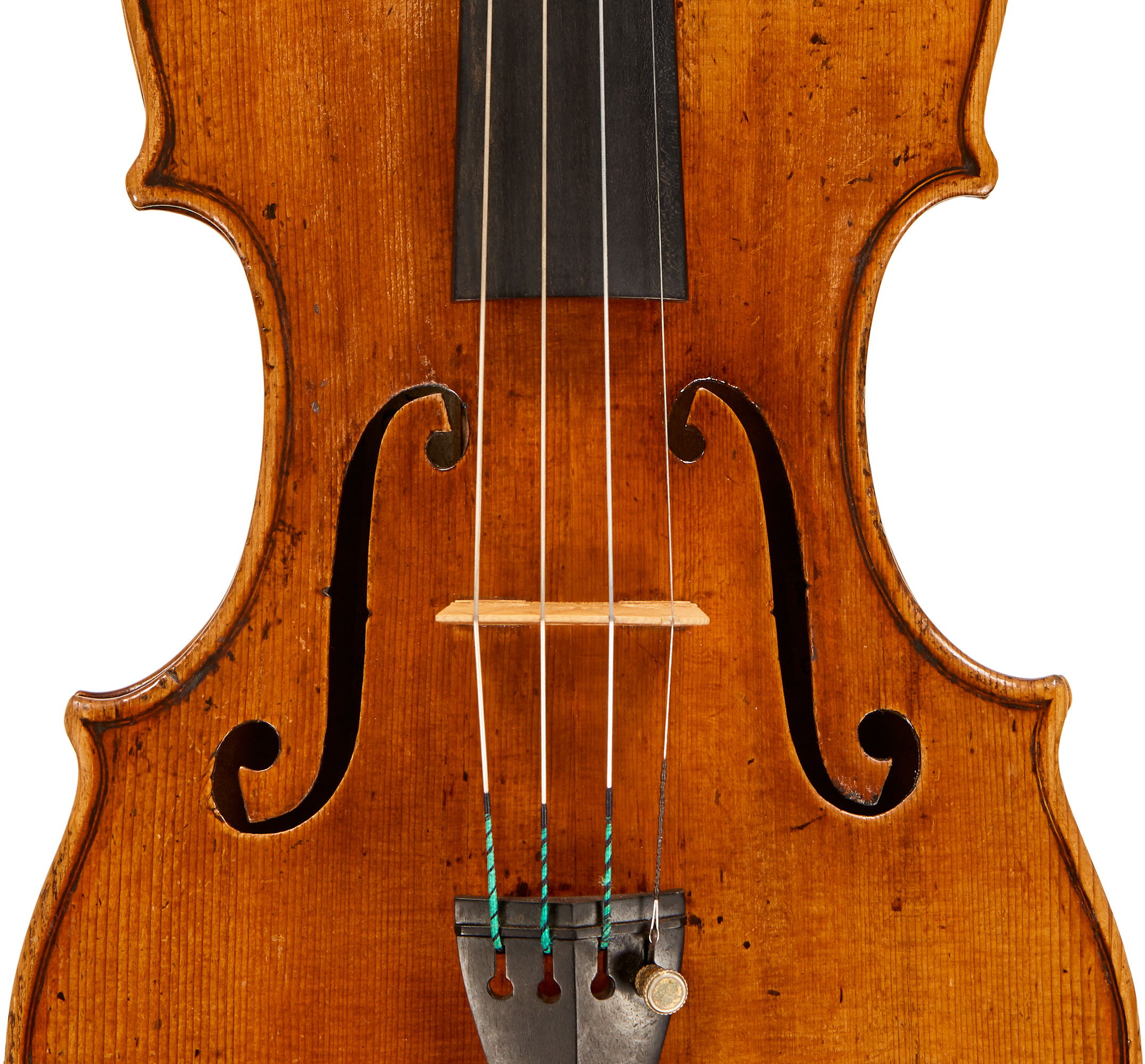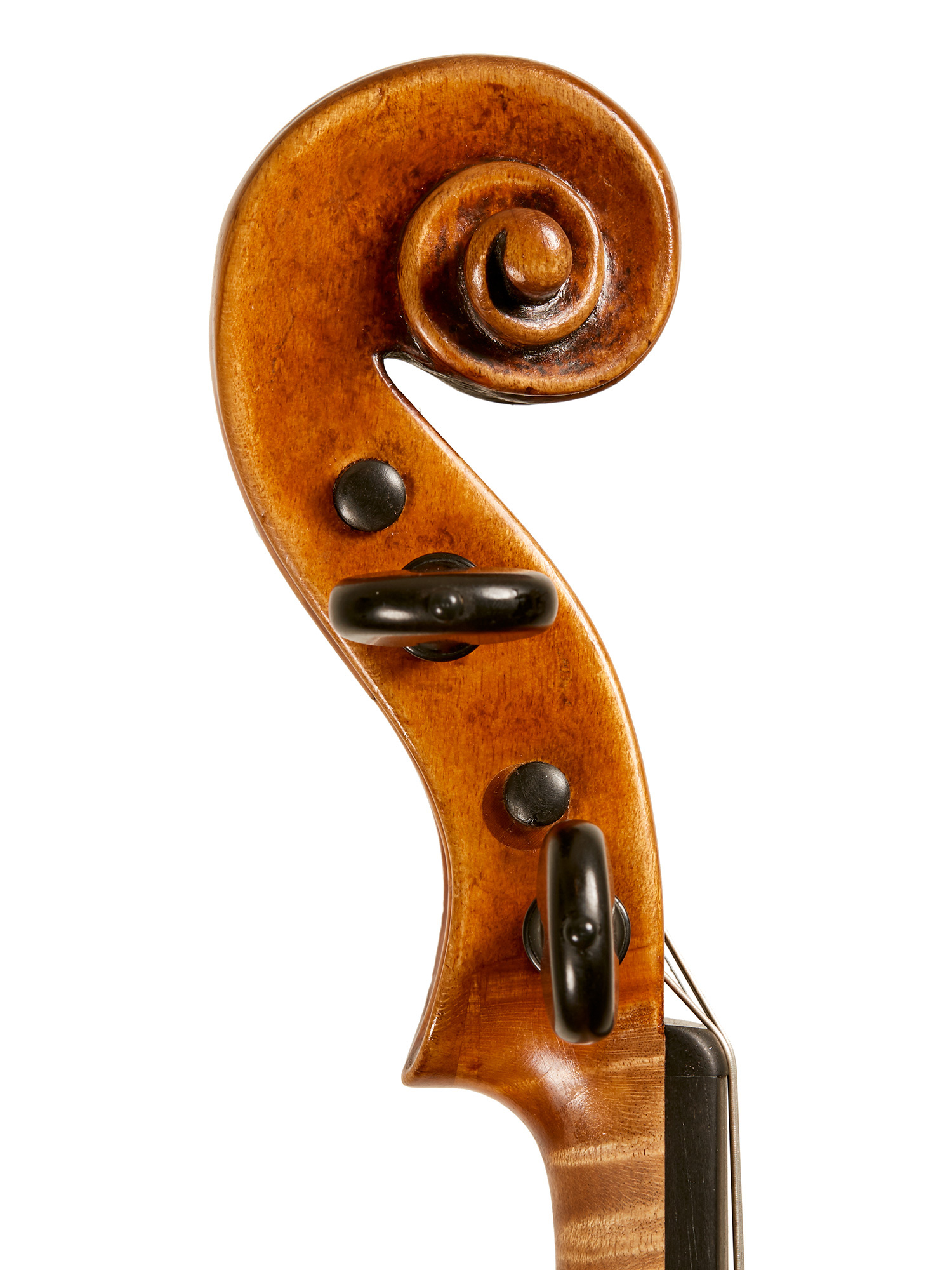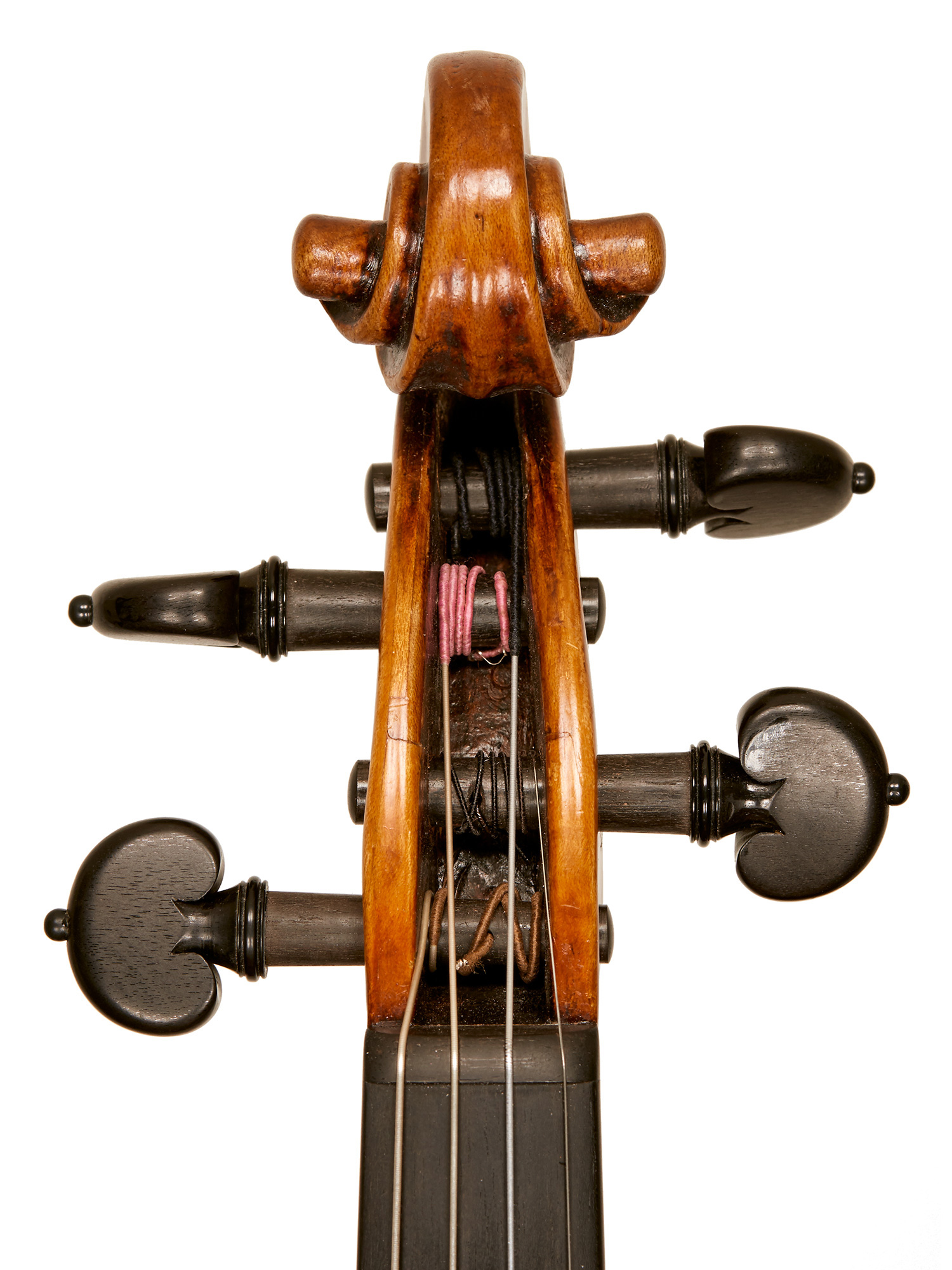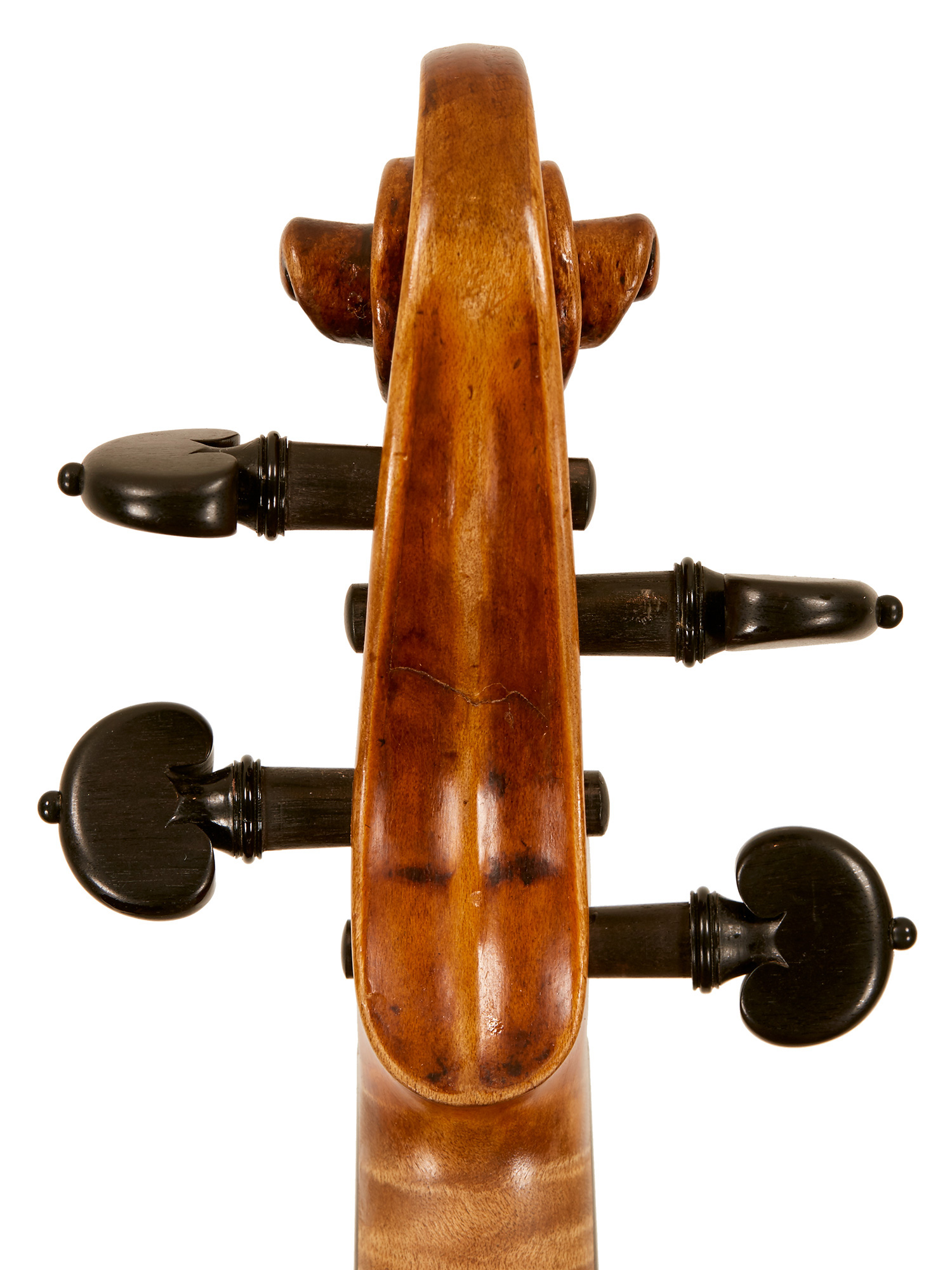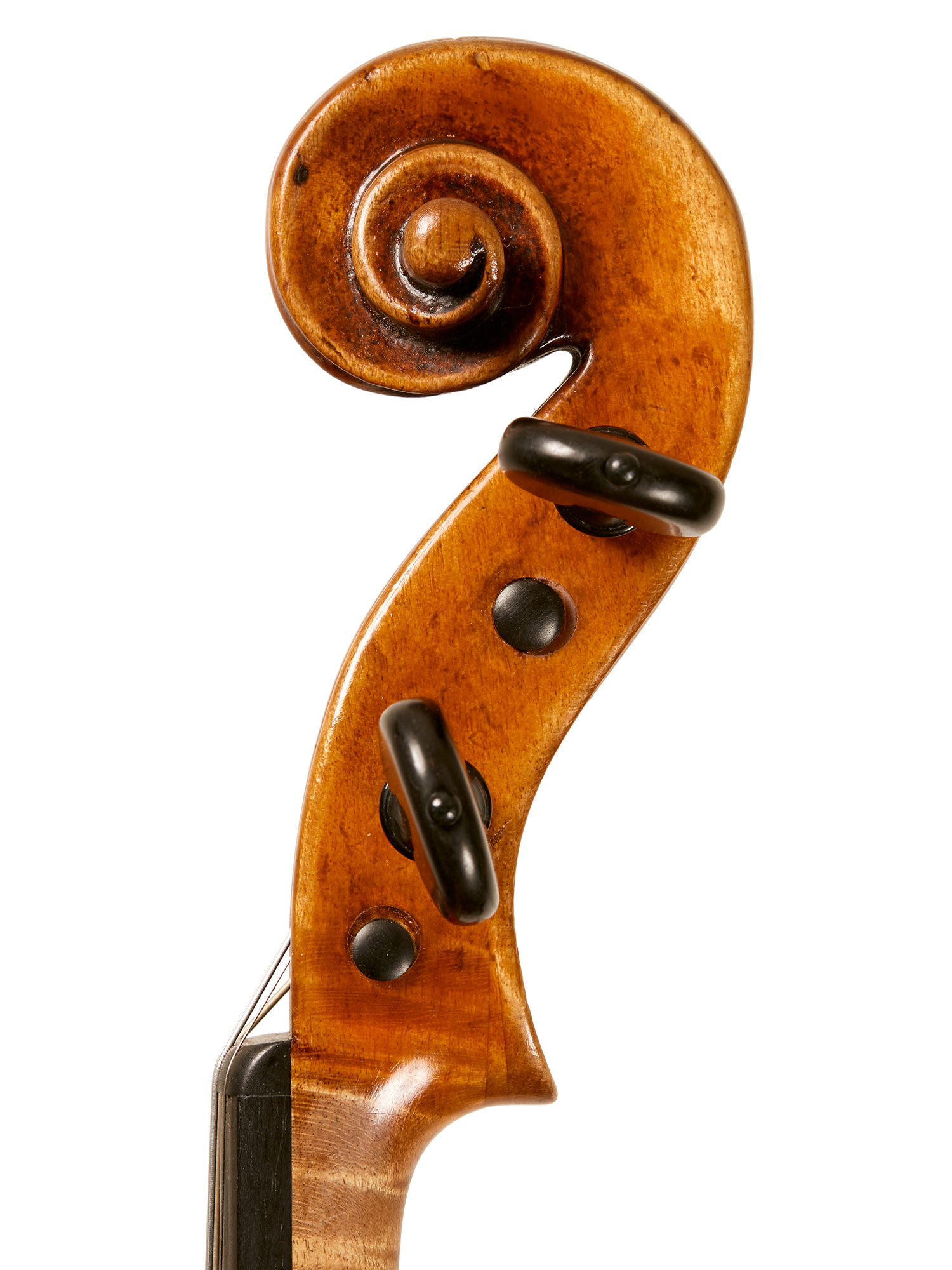Bartolomeo Giuseppe Guarneri 'del Gesù', 1744 the ‘de Bériot’, Cremona, Italy
Bartolomeo Giuseppe Guarneri 'del Gesù'(1698-1744)
Giuseppe Guarneri ‘del Gesù’, so named to distinguish himself from his father, Giuseppe Guarneri ‘filius Andrea’, was the most innovative violin maker in history. His instruments show two juxtaposing aspects — that of descending from the dominant Cremonese tradition and design, and that of a freer expression and exuberance which had not been seen since the violin’s conception by Andrea Amati 200 years earlier. The maker’s fame is compounded by Paganini's testimonial, who counted the ‘Cannone’ of 1743 as his most cherished instrument. Guarneri del Gesù’s work can be categorised into three periods which exhibit a continuing evolution of style; loosely speaking these are the early period (c. 1715- 1730), middle period (c.1730-1740) and late period (c.1740-1744). Although there are sub-categories within these years with further subtleties to his working styles, what remains constant is the use of the finest materials, an exquisite varnish and a developing variation to his work. Del Gesù’s great flair and confidence as a maker displays an unrivalled balancing of individuality and characterisation, alongside traditional refinement and discipline. Owing to these exceptional traits, his violins possess a volume, power and darkness of timbre which is something highly desired by top players. Along with the extreme rarity (the number of instruments surviving stand at a mere c.150, exclusively comprising violins), they command the highest prices in today’s market.
Violins from the last period of del Gesù’s working life have been preferred by history’s most demanding soloists – Paganini, Heifetz, Szeryng, Zukerman, Menuhin, Vieuxtemps, Wieniawski – and they rarely come up for sale. The violin is original in all its principal parts and centuries of care have preserved the violin in the condition we see it today.
About 1744 the ‘de Bériot’
The ‘de Bériot’ of 1744 is an exceptional example of Guarneri del Gesù’s late period and it belongs to a group comprising extremely few examples which were made during the maker’s last living year. The instrument exhibits all the hallmarks and eccentricities which we expect from this master’s work at its most mature: the model is broad and flowing, squarer in the upper and lower bouts, with open c-bouts and with a flat arching that epitomises efficiency and power.
The f-holes are wild and long with exaggerated lower and upper wings curling prominently into the body’s central section and lower bouts.
The scroll is cut free-hand with a thin profile, truncated tuns to the volute, and with ears that dip characteristically inwards towards the centre.
Dendrochronology
Dendrochronology dates the latest ring of the bass and treble side as 1678 and 1732, with a very exciting result of a possible same-tree match to the ‘Ole Bull’ of 1744.
PROVENANCE & HISTORY
This violin was once owned by and takes its name from the Belgian violinist and composer Charles Auguste de Bériot (1802–1870).
Shortly before his death, de Bériot sold the violin to his friend and pupil, the Dutch violinist Willem Ten Have (1831–1924), who also composed more than 40 violin works. Upon the death of Ten Have, the ‘de Bériot’ passed to his son Jean, also a gifted violinist and for some time a teacher in the US. Jean’s son inherited the instrument in 1963 and sold it to Rembert Wurlitzer’s firm in New York. It passed through various hands before coming to another New York dealer, Jacques Français, who sold it to the Russian-born instrument collector David Josefowitz in 1993. To acquire the violin, Josefowitz traded-in a golden-period Stradivari together with a Nicolò Amati violin. Josefowitz passed away in January 2015 and the violin is now being sold by his estate.
CHARLES-AUGUST DE BÉRIOT
Charles-August de Bériot was one of the most important figures in violin history. As a virtuoso player, he served as violinist to King Charles X of France and to King William I of the Netherlands and in addition to touring, he composed a large body of violin concertos and pedagogical compositions which include a violin method and concert studies which are still in use today. In 1842 he became head of the violin faculty in the Brussels Conservatoire having turned down a position at the Paris Conservatoire, and there founded the Franco-Belgian violin school. His most notable students included Henri Vieuxtemps and Heinrich Willhelm Ernst; both were prominent performers and also followed in de Bériot’s footsteps as composers, and in turn passed on the performer-composer trait to Eugène Ysaÿe, who carried the Franco-Belgian school through into the 20th century.






